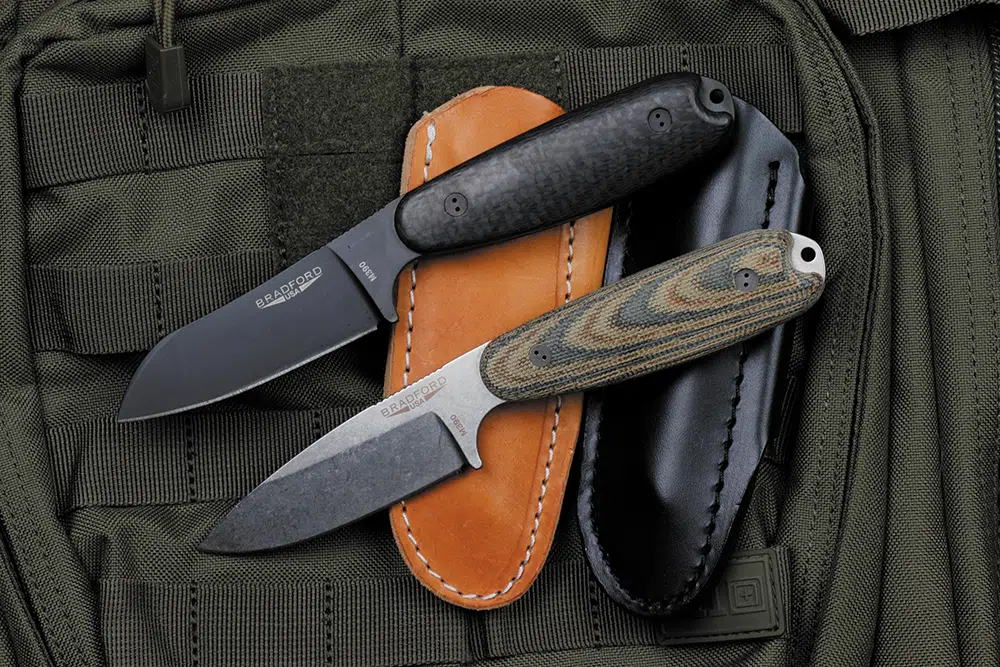When it comes to the world of culinary arts, the importance of a knife cannot be overstated. For kitchen professionals, a knife is more than just a tool; it's an extension of their hands. While the blade remains the focal point, the knife handle plays a crucial role in ensuring comfort, safety, and efficiency. Enter the realm of knife handle wraps a topic that has piqued the interest of many culinary enthusiasts and professionals alike.
Whether you're a seasoned chef or just starting in the kitchen, understanding the nuances of knife handle wraps can enhance your culinary skills. These wraps not only add a touch of personalization but also improve the grip, making your cutting tasks safer and more efficient.

Why Are Knife Handle Wraps Important?
The primary purpose of knife handle wraps is to provide a better grip. A secure grip is paramount, especially when dealing with intricate cutting tasks. A well-wrapped handle ensures that the knife doesn't slip, reducing the risk of accidents. Additionally, handle wraps can significantly reduce hand fatigue, allowing chefs to work for extended periods without discomfort.
Beyond functionality, knife handle wraps add a personal touch to your kitchen toolkit. With a variety of materials and styles available, chefs can customize their knives to reflect their personality or match the aesthetic of their kitchen.
Types of Knife Handle Wraps
Paracord Wraps
One of the most popular choices, paracord wraps are known for their durability and versatility. Originally used in parachutes, paracord is a lightweight nylon rope that offers a firm grip. It's available in various colors and patterns, allowing for endless customization options. Learn more about knife lanyards and their uses.
Leather Wraps
For those who prefer a classic and elegant look, leather wraps are an excellent choice. They provide a comfortable grip and age gracefully over time. Leather wraps require regular maintenance to ensure longevity, but many chefs find the effort worthwhile for the timeless appeal they offer.
Rubber and Synthetic Wraps
These wraps are ideal for professionals looking for maximum comfort and grip. Rubber and synthetic materials are known for their anti-slip properties, making them perfect for fast-paced kitchen environments. They are also easy to clean and maintain, making them a practical choice for busy chefs.
Benefits of Using Knife Handle Wraps
Beyond aesthetics and grip, knife handle wraps offer several benefits. They can protect the original handle from wear and tear, extending the knife's lifespan. Additionally, wraps can provide insulation, making it comfortable to hold the knife in both hot and cold conditions.
Moreover, in emergency situations, certain wraps like paracord can be unwound and used for various purposes, adding an element of utility beyond the kitchen. For more insights on the utility of knives, check out fixed blade knives.
How to Wrap a Knife Handle
Wrapping a knife handle might seem daunting at first, but with the right technique, it can be a straightforward process. Here's a simple guide:
- Start by selecting your preferred wrapping material.
- Ensure the handle is clean and dry.
- Secure one end of the wrap at the base of the handle.
- Tightly wind the material around the handle, ensuring even coverage.
- Secure the end of the wrap with knots or adhesive.
It's advisable to watch tutorial videos or consult guides for specific wrapping techniques. For more detailed steps on knife maintenance, refer to the guide on sharpening knives.
Conclusion
In conclusion, knife handle wraps are an essential accessory for any kitchen professional. They combine functionality with aesthetics, offering a safer and more personalized cooking experience. As the culinary world continues to evolve, the tools we use must also adapt. Embracing innovations like handle wraps ensures that chefs remain at the forefront of their craft.

FAQs
What materials are best for knife handle wraps?
While there are several options, paracord, leather, and synthetic materials are the most popular due to their grip, durability, and aesthetic appeal.
How often should I replace my knife handle wrap?
It largely depends on the material and frequency of use. Regular checks for wear and tear will help determine when a replacement is necessary.
Can I wrap any knife handle?
Most knife handles can be wrapped, but it's essential to ensure the wrap doesn't interfere with the knife's balance or functionality.
This article contains affiliate links. We may earn a commission at no extra cost to you.


























